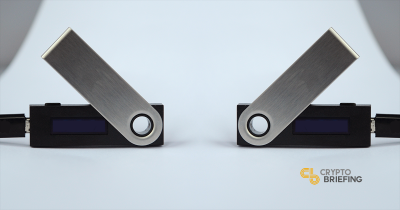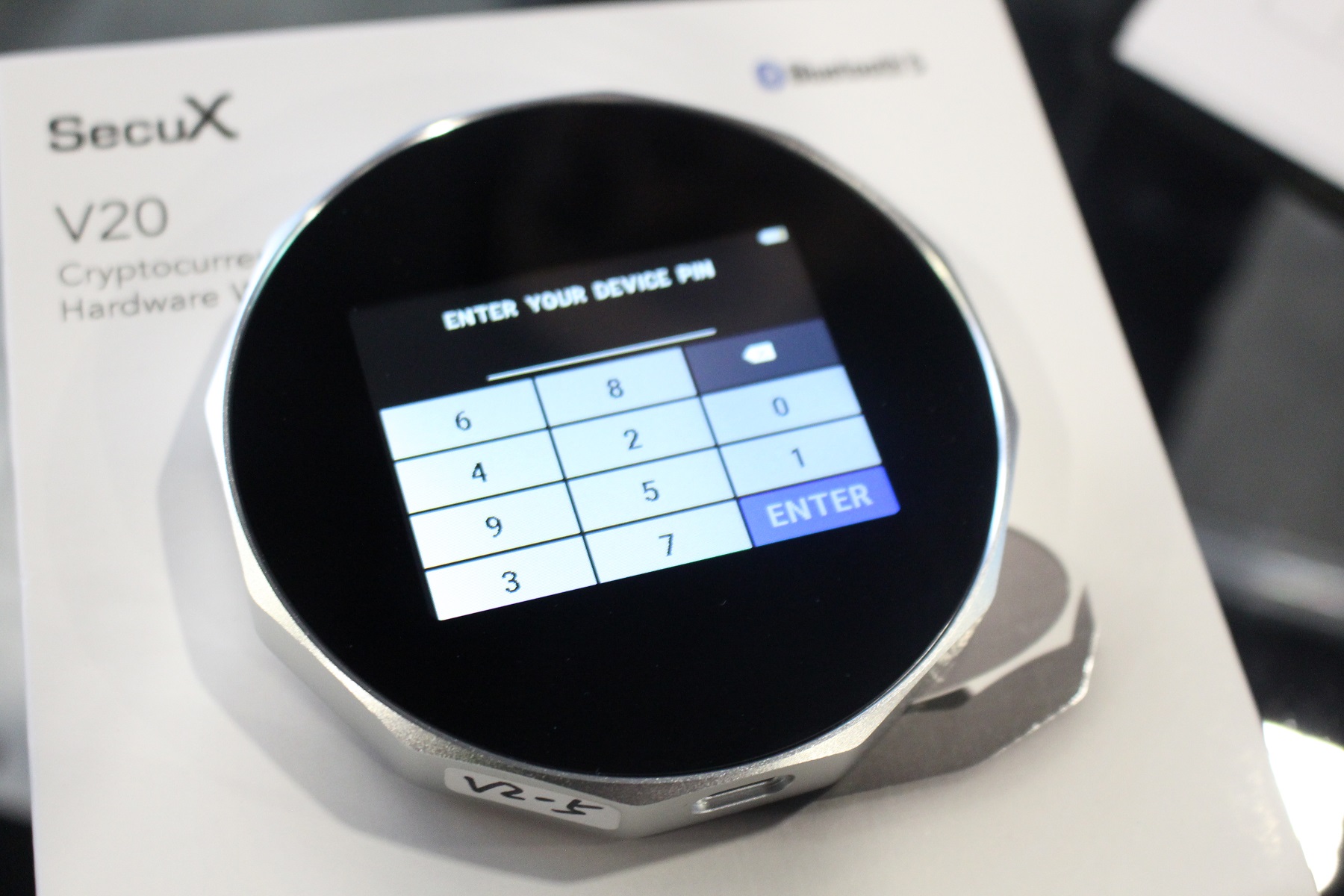Ledger or SecuX: Who Has The Best Hardware Wallet For 2019?

Share this article
Storing cryptocurrency securely is one of the biggest issues facing coin hodlers. Hardware wallets, which keep assets off the internet and safe from hackers, are often considered to be the most effective. Two major wallet makers, France’s Ledger and Taiwan’s SecuX Technologies, had booths at CES 2019, in Las Vegas this week.
I was also there. CES is one of the biggest trade shows in the world; 200,000 people flew in from all around the world. It’s so big that the conference is based in three centers and practically occupies the entire city for the week it’s on. The prestigious, the mighty and the rich had their booths at the Las Vegas Convention Center (LVCC).
Breaking apart Ledger’s Nano X
Unsurprisingly, this was where Ledger was based. The French startup, which managed to raise a cool $75m last year, was showcasing its new hardware wallet, the Nano X. The fundamentals are pretty much the same as they were with the Nano S, Ledger’s most popular wallet to date. The key differences were that it came with a slightly larger screen and had added Bluetooth connectivity, which lets you pair your wallet to your phone using the Ledger Live app.
They had a booth right in the middle of the LVCC, replete with a giant statue of the Nano X. Expecting to ship in March 2019 at a retail price of $119, the team told me that the new Bluetooth feature meant it could be linked to software wallets, making it easier to exchange crypto directly with the Nano X.
Like the Nano S, it supports 29 different virtual currencies, including most of the big ones like bitcoin (BTC), Ether (ETH) and XRP – as well as the ERC20s. One hundred all in all. The main difference is that whereas the Nano S could only support 16 different assets, the Nano X can support all one hundred at the same time.
When I spoke to the team they were really keen on pushing the fact that the Nano X came with a new ST33 chip. Technobabble aside, the team admitted that what it really came down was it made the wallet slightly faster – literally a millisecond – than the Nano S.
One thing to consider with the Nano X was that it seemed a bit flimsy. Looking at it, it seemed to be made of pieces of plastic snapped together. I asked whether this made it potentially vulnerable. After all, it wouldn’t take much to pull the shell apart, retrieve the chip within. There are so many of these chips around now, that a skilled engineer with the right stuff could crack the encryption and steal the crypto.
The Ledger team member I was speaking to didn’t much like this and started making excuses when I asked to hold the wallet. He sent another member to offer me exclusive access to their affiliate program. When I refused, the conversation was done. I was fobbed off for the rest of the day.
Breaking Down the SecuX V20
It was hard not to miss Ledger. But the booth for SecuX took a bit of exploring. I found it, eventually, hidden away in the bowels of the Sands Expo, another conference center about a mile away from the LVCC in the heart of the Venetian. It was like comparing a space station to a school science fair. Whereas LVCC had robots and interactive screens, Sands Expo had cute home-printed paper signs.
Like Ledger, SecuX were at CES to showcase their new wallet, the cylindrical V20. It’s a pricey bit of kit: one V20 will set you back $149. It’s a much larger device than the Nano X. But it includes a 2.8-inch color touchscreen, USB-C connectivity. It also has a low-energy Bluetooth 4.2 connection to pair to your smartphone, like the Nano X.

Where V20 truly shines over Ledger’s hardware wallets is that the aluminum frame is much more difficult to physically break apart. It’s a welded aluminum frame, so you can’t actually pull it apart without drilling into it, which would destroy the chip. Considering the wallet can have up to a 24-word passphrase, that makes it very nearly impossible to break into.
The only problem I saw was the number of assets it supported. Although it could be used to store collectibles and dApps, unlike Nano X, it can only store six different cryptocurrencies, as well as ERC20s. I asked how many it could hold simultaneously in an email follow up, but the team didn’t respond.
Which Wallet to Choose
Ultimately the wallet you go for depends on your needs. The Ledger Nano X looks sleek and stylish, and its small size makes it far more portable. That said, the SecuX V20 is sturdier and larger, making it great for long-term crypto holding, and you’re unlikely to lose it.
The main advantage for the Nano X is you can hold many more cryptocurrencies than the V20. That’s obviously an advantage if you have a diverse portfolio, which you want to store offline. The only issue is that it’s more vulnerable than the V20. Breaking into the V20 basically destroys the chip, the same can’t be said for the Nano X. If you dropped it on the go, it wouldn’t take much for someone who knew what they were doing to steal your assets.
With the Nano X, you have more coins; the V20 gives you greater security.
What’s more important to you?
The author is invested in digital assets, including BTC which is mentioned in this article.
Join the conversation on Telegram and Twitter!
Share this article
